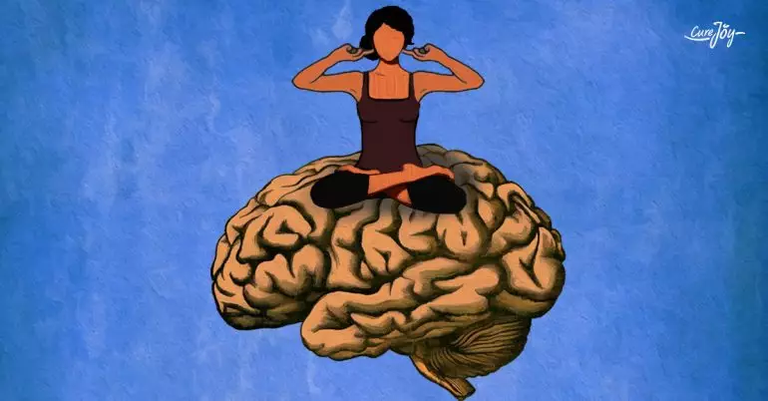
Yoga is a surprising but effective way to boost your brain power. Try asanas like the plow pose, bridge pose, big toe pose, and inversions like the shoulder stand to increase blood circulation and oxygen flow to the brain. Try asanas like the lotus pose to reduce stress and calm your mind. You could also consider yogic breathing and massage, as they not only improve focus but also fight anxiety.
Are you trying to keep your mind sharp even as stress, age, and other factors get in the way? Keeping your brain fit and in good working order is vital not just in the prime of your life but even as you grow older. And yoga could be the key. You may know that yoga is a good form of exercise that gets your blood circulation going, improves oxygen flow, and helps with overall health. But did you know that yoga also helps boost brain function? Research has found that regular practice of yoga
Increases gray matter and the size of the memory centers in the brain1
Increases overall brain wave activity and improves cognition2
Improves mood, relieves depression and anxiety, and improves stress response34
Enhances focus and memory in kids (even with ADHD) and improves learning and academic performance5
It is important to practice yoga regularly by putting together a regimen with a variety of asanas and deep breathing techniques. Some yoga poses like inversions, which stimulate blood flow to the brain as well as those that help relax the mind can be especially useful. Here’s a roundup of the best asanas to ramp up your brain and keep it in good health.
1- Tadasana Or Mountain Pose
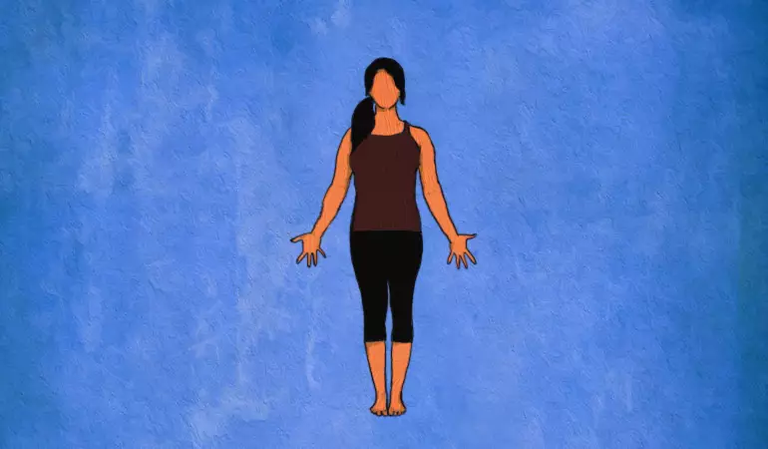
This simple standing pose can help you focus your mind on your breathing, thereby relaxing you. It can also alleviate headaches and insomnia.6 When you don’t get enough sleep, your brain isn’t able to function at its best. This pose should help you sleep better so your brain is more alert.
Stand with your feet together, arms by the sides, your fingers pointing down to the ground.
Keep your abdomen engaged but your pelvis neutral.
Broaden your collarbone and roll your shoulders back.
Keep your chin parallel to the ground, the top of your head spiraling up to the ceiling as you feel your spine lengthen.
Breathe in and out with a gentle “ha” sound as you exhale.
2- Sarvangasana Or Shoulder Stand
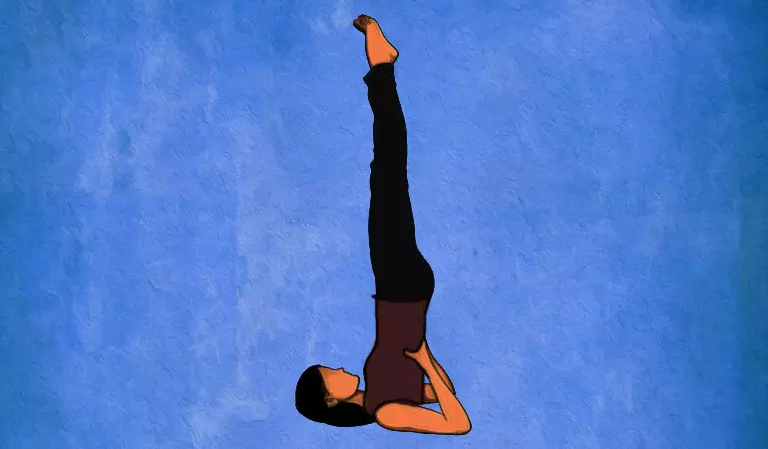
This inversion helps nourish the brain by improving blood flow to the hypothalamus and pineal glands in your brain. This, in turn, boosts brain function and cognitive function. Here are the steps to ease into a shoulder stand. But it would be best to attempt this under the guidance of a yoga practitioner initially to avoid injury.7
Lie down on your back and slowly lift your legs up into the air, extending them in a controlled manner.
Your elbows must be resting on the floor.
Keep your hands beneath your hips and breathe in as you slowly raise your pelvis, followed by your trunk, off the mat/ground. Keep going until you feel your chin touching your chest.
Hold this position and keep breathing normally. Try to hold for a few seconds.
Breathe out as you slowly lower your torso (followed by your pelvis and legs) back to the ground.
3- Paschimottanasana Or Seated Forward Bend
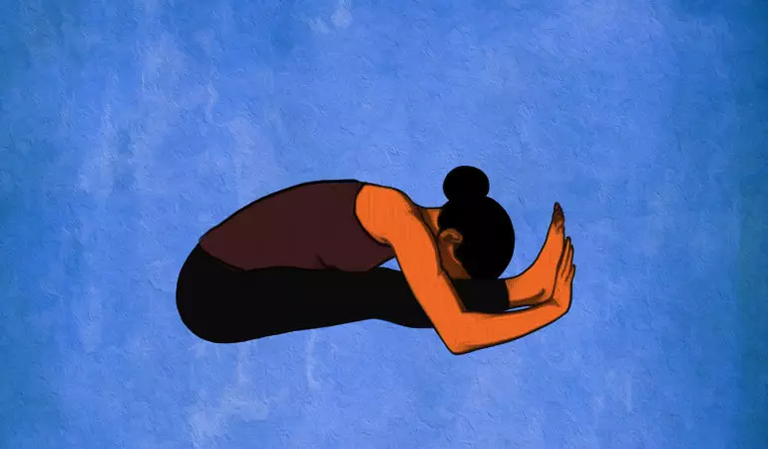
Touted to be really good for your brain, this type of forward bend helps revive your nervous system, boost blood supply, and calm your mind.8
Sit on the ground on a mat or folded blanket to support the buttocks and extend your legs.
Rock on each buttock by turn, pulling away from the other sitting bone as you do so.
The tops of your thighs must be turned in ever so slightly and pressed into the floor.
Press your palms and fingertips into the floor and raise your sternum up to the ceiling.
Breathe in as you lean forward from your hip, arms fully extended, elbows straight, hands on the sides of your feet, and your thumbs resting on your soles.
Do not lean from your waist.
Feel your tailbone lengthen. If you cannot reach your feet with the hands, use a strap looped around the feet and hold this instead.
Gently ease into the forward bend, lengthening your front torso and keeping the head raised.
Your elbows must bend out to your sides and lift up off the floor.
If you’re holding a strap then loosen your hold, move your hands forward and keep your arms long when you do this.
Feel your lower belly graze your thighs, followed by your upper belly and then your ribs.
Your head will touch your thighs last.
Allow your front torso to rise and lengthen a little each time you breathe in. When you exhale, release more into the forward bend. Repeat this for 2–3 minutes.
To exit the pose, lift your torso from your thighs gently and straighten your elbows.
Breathe in as you raise your torso up, pulling your tailbone into the pelvis.
4- Padmasana Or Lotus Pose
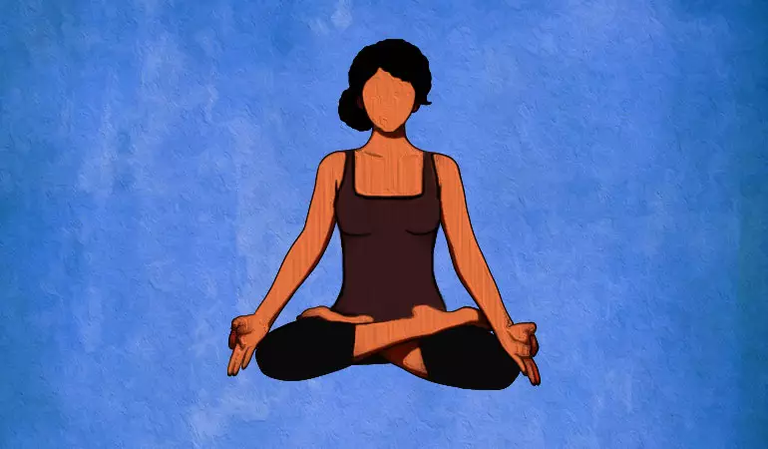
This pose calms the mind and washes away fatigue and muscular tension. When you relax and unwind, your brain is able to rejuvenate itself and be more alert to take on new challenges.
Sit on the ground on a mat with your legs stretched ahead of you and your spine erect.
Bend your right leg at the knee, placing that leg onto your left thigh so that the soles of your feet point up and your heel is as close to your abdomen as you can manage.
Bend your left leg at the knee, bringing it onto your right thigh in the same manner.
Now put your hands into a mudra of your choice. Try the classic chin mudra where you bring the index finger and thumb together to form a circle, touching them together lightly, and extend the rest of your fingers straight. Ensure your spine is erect throughout.
Inhale and exhale deeply with long breaths.
5- Halasana Or Plow Pose
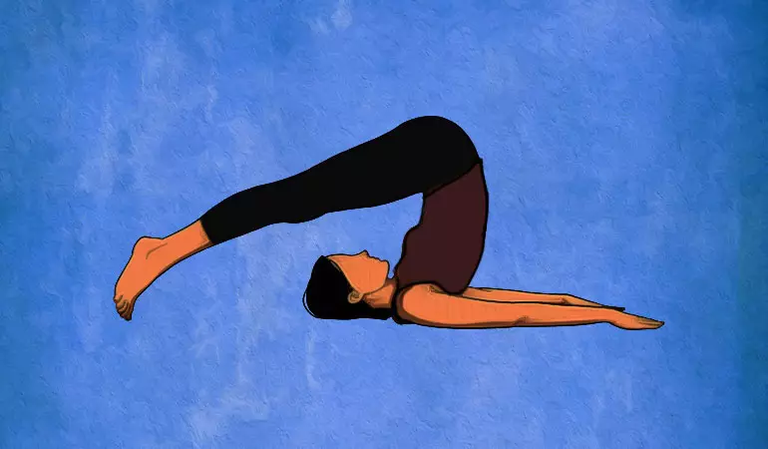
The plow pose improves blood circulation and vitality. It also soothes the nerves.
Lie down flat on your back with your arms by your sides, palms facing downward.
Breathe in and use your abdominal/core muscles to raise your feet off the ground to a 90-degree angle.
Breathe normally, supporting your hips as well as your back with your hands, raising them slowly off the floor too.
Now sweep your legs over your head so that the toes touch the floor above your head.
Your back should be vertical/perpendicular to the ground.
Hold this for a few seconds, allowing your body to relax a little as you continue to breathe steadily.
Exhale as you release the pose and return to your legs.
6- Setubandhasana Or Bridge Pose
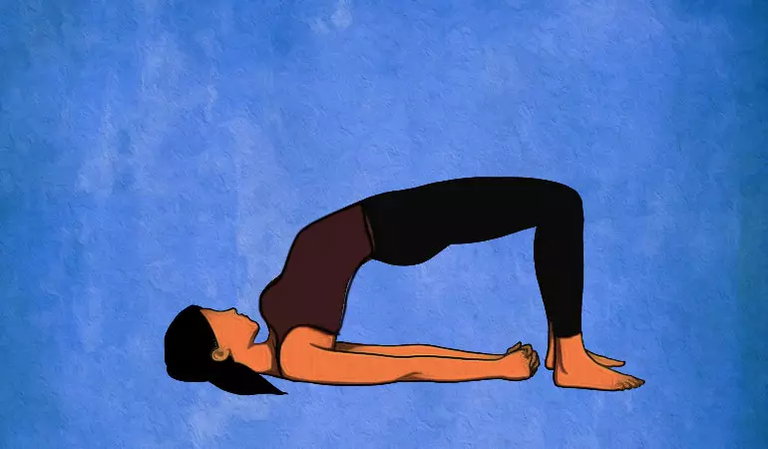
The bridge pose is a restorative pose that calms your mind and also revitalizes you. It boosts blood supply to the brain and revitalizes your nervous system. Regular practice can even reduce your migraine headaches.910
Lie on your back with knees bent so that your feet are firmly flat on the floor about hip-distance apart.
Reach toward your heels with your fingers, lengthening your arms. Your palms must face down.
Let your gaze drop down to your knees.
Breathe in as you roll your body up through the spine, beginning with your hips. Go as high as you can.
Hold this pose for 3 to 5 breaths before exhaling and lowering your body slowly (feel one vertebra lower at a time).
7- Padangusthasana Or Big Toe Pose
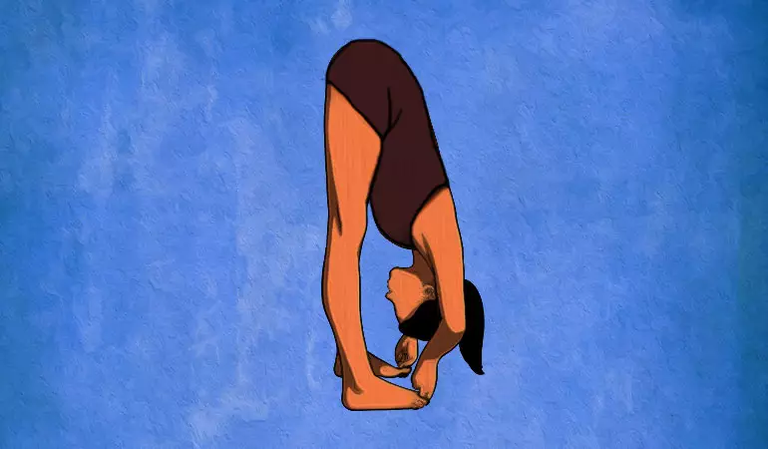
The big toe pose also calms the brain and helps relieve anxiety and stress.
Stand upright, feet 6 inches apart. Exhale as you bend forward from your hips, your head and torso moving in unison.
Grip your big toe using the index finger and middle fingers of your hands by sliding them in the space between the second toe and the big toe. Your thumbs can help hold the fingers in place.
Inhale as you try and lift your torso, with elbows straight. Lengthen your torso.
Lift your sitting bones as you exhale. Release your hamstrings and lightly lift your lower belly to the back of your pelvis even as you feel your lower back hollow a bit. Deepen the hollow more with each successive exhalation.
To finish, bend your elbows and lengthen both the sides and front of your torso, then lower yourself into a forward bend when you exhale. Hold this for a minute before you release your toes.
Move your hands up to rest on your hips. Inhale as you bring your head and torso upright together.
8- Bhramari Pranayama Or Humming Bee Breathing
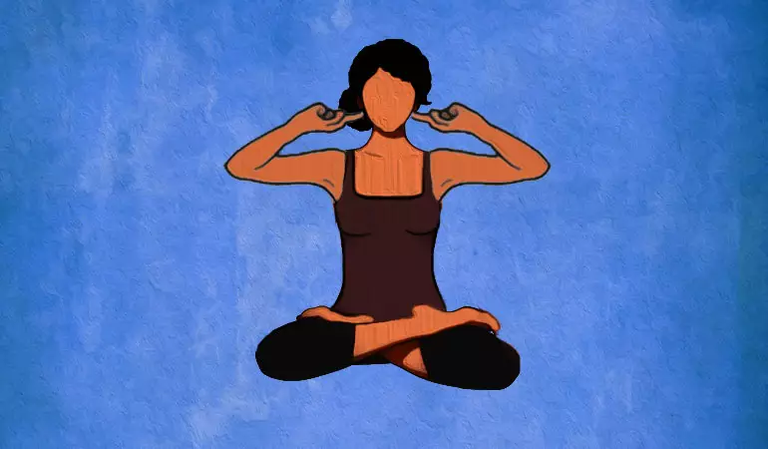
The humming bee breathing can improve your memory as well as concentration. It can help release any negative emotions from your mind and calm you down as well. Perform this pose every day to experience the calmness associated with the humming sound vibrations. You can also use this as an antidote to stress or fatigue.
Find a quiet, airy spot and sit down with your eyes closed. Smile gently.
Notice the sensations your body experiences within and the quietness around you.
Now put your index fingers onto your ears in the cartilage between the ear and cheek.
Inhale deeply. As you exhale, press gently down onto the cartilage.
Keeping it pressed, make a loud bee-like humming sound. Higher pitched sounds work better, but if you are more comfortable with a low pitch that’s fine too.
Inhale again and repeat this 3–4 times.
9- Nadi Shodhana Or Channel Cleaning Breath
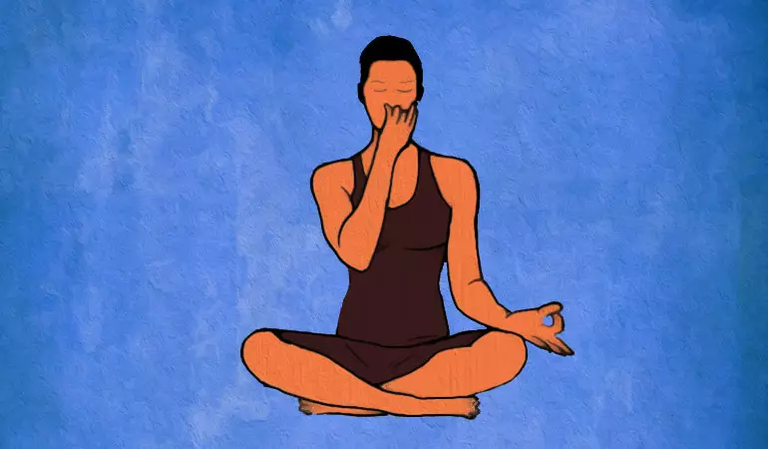
The channel cleaning breath is a breathing method that is good for the brain. As you breathe slowly in and out, you should feel the drop in your heart rate and anxiety. This pose is said to help facilitate energy flow in the body.11
Sit comfortably with your legs crossed in the sukhasana pose and exhale deeply.
Next, keep your right nostril closed with the thumb so that you breathe in from your other nostril.
After inhaling from this left nostril, close it using the fourth and fifth fingers.
Now close both nostrils and hold breath for a couple of seconds.
Hold your left nostril closed as you exhale slowly and completely from the opened right nostril.
Next, inhale from the right nostril deeply again, left still closed.
Again close both nostrils and hold your breath for 1–2 seconds.
This time, hold the right nostril closed as you exhale slowly and completely from the open left nostril. Inhale from the left deeply, right still closed.
10- Kapal Randhra Dhouti Or Yogic Facial Massage
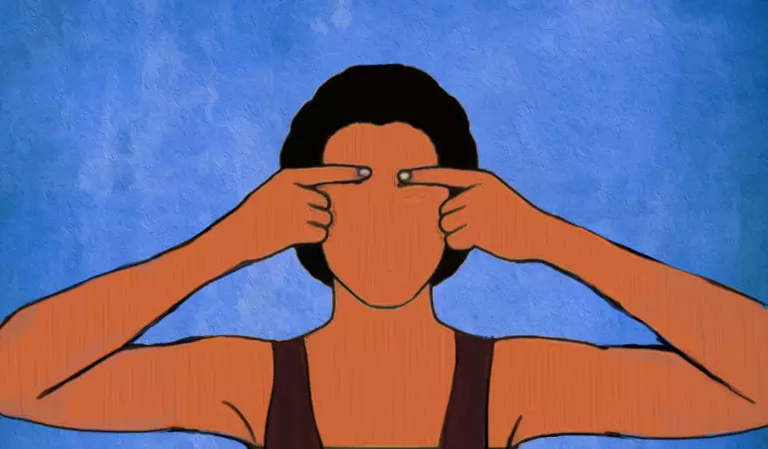
This yogic facial massage is designed to unclog cavities of your skull and free up mucus, dust, and other pollutants. This helps improve blood circulation and oxygen flow and has a positive impact on mental health. It also relieves stress, calms the nervous system, and boosts focus as well as brain power.12
Put your thumbs on your temples. Use the other 4 fingers of each hand to gently massage your forehead.
Next, use the middle and forefinger to massage around the eyes using a circular motion.
Next, use your thumb and index finger to pinch your eyebrows, following their natural curve so you can feel the bone beneath.
Now massage your cheeks upward along the cheekbones.
After this, massage the gap between the lips and nose and lips and chin. Use your fingers in a left-to-right motion.
Massage the sides of your face and also the area behind the ears using a back and forth motion.
Look up and now massage your neck using firm upward strokes.
Meditation Can Also De-Stress And Calm You
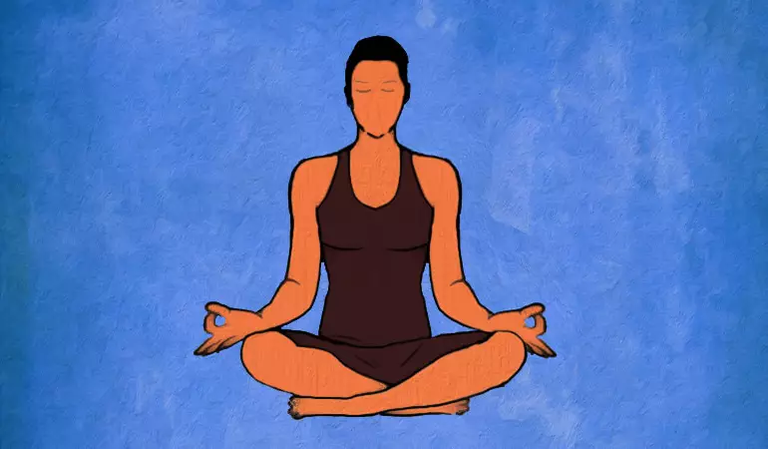
Yogic meditation can also help the mind achieve its full potential. It can make you more positive and less stressed.13 One such meditation that can help you is the calm heart meditation with anjali mudra or salutation pose.
Settle down in a comfortable position on the ground or in a chair, in jnana mudra (with the thumb and index fingers of each hand touching), hands on knees with palms facing upward.
Relax any tension in your body as you feel your spine rise up out of your pelvic region. Let the back of your neck lengthen and your chin rest gently downward.
Focus on the center of your chest and start to chant “Om” as you exhale. It should feel like the sound is emerging from your chest itself.
Feel each progressive “Om” resonate and vibrate more, opening up your heart and washing away stress and tension. Do this repeatedly for a few minutes or as long as you wish. Most people meditate between 10 and 30 minutes.
When you want to end the meditation, bring your hands together in the salutation pose or anjali mudra, palms flat against each other and head bowed.
This technique will ease tensions, wash away anxiety, and calm the mind. It will also help you better manage the emotional ups and downs you experience every day.
Safety First!
Now that you know which asanas and breathing and massage techniques can boost your brain power, learn how to perfect these movements and practices under the guidance of a yoga teacher. Doing something incorrectly could even injure you.
If you are on any medication, speak to your doctor about starting yoga. Don’t discontinue any existing treatment without their go-ahead either. Remember, if you have an age-related memory disorder (like Alzheimer’s disease) or if you have a child with a learning disorder, do not substitute yoga for a consultation with your doctor.
if you like my work upvote and comments
Great
thanks
Informative
Nice
I like the number 5.
I do that some times....
Good post
If i tell u i didnt enjoy reading it i must be lying.. Nice post bro
I have to say this that I am not a Yoga Guy. That being said Yoga does help in a lot of Ways and I can't Ignore that.
very nice :) have a look at our channel zenvow.